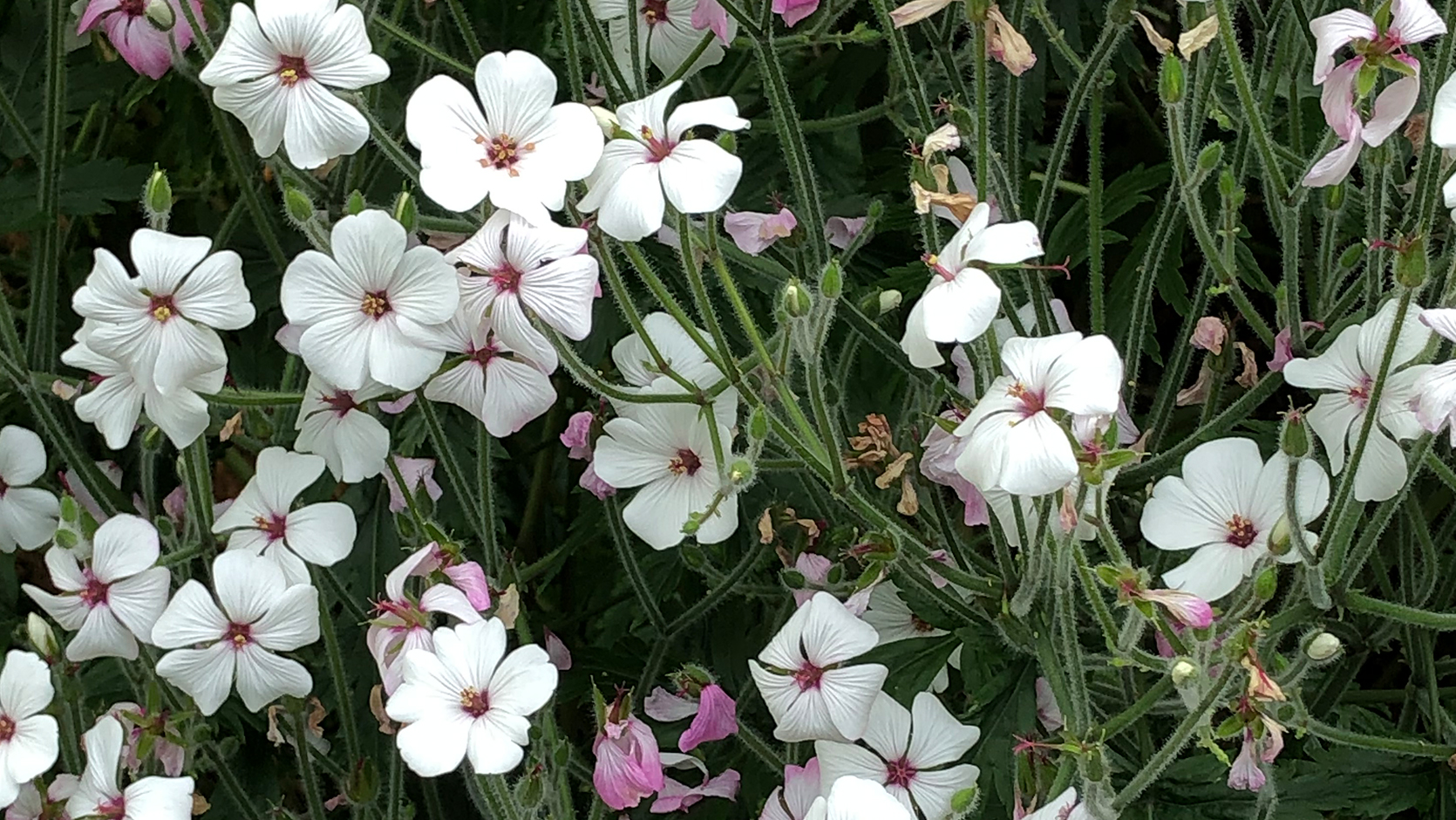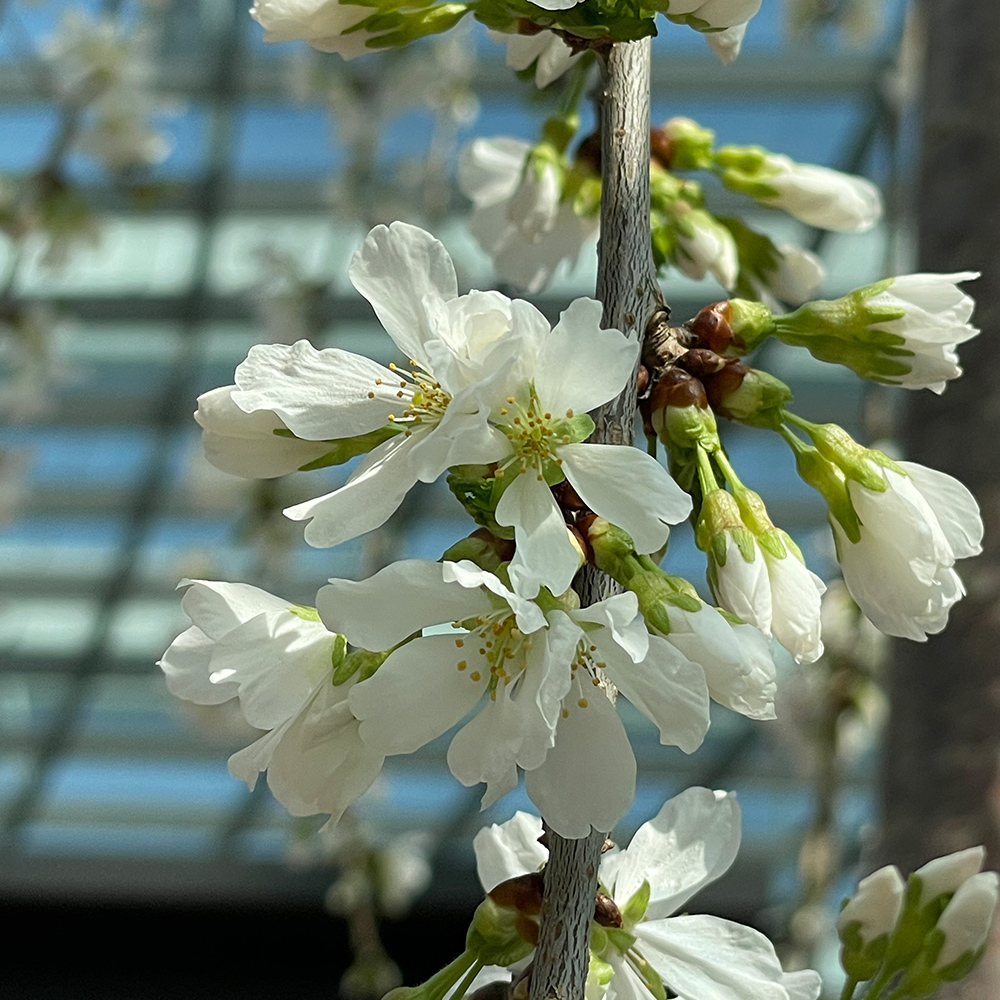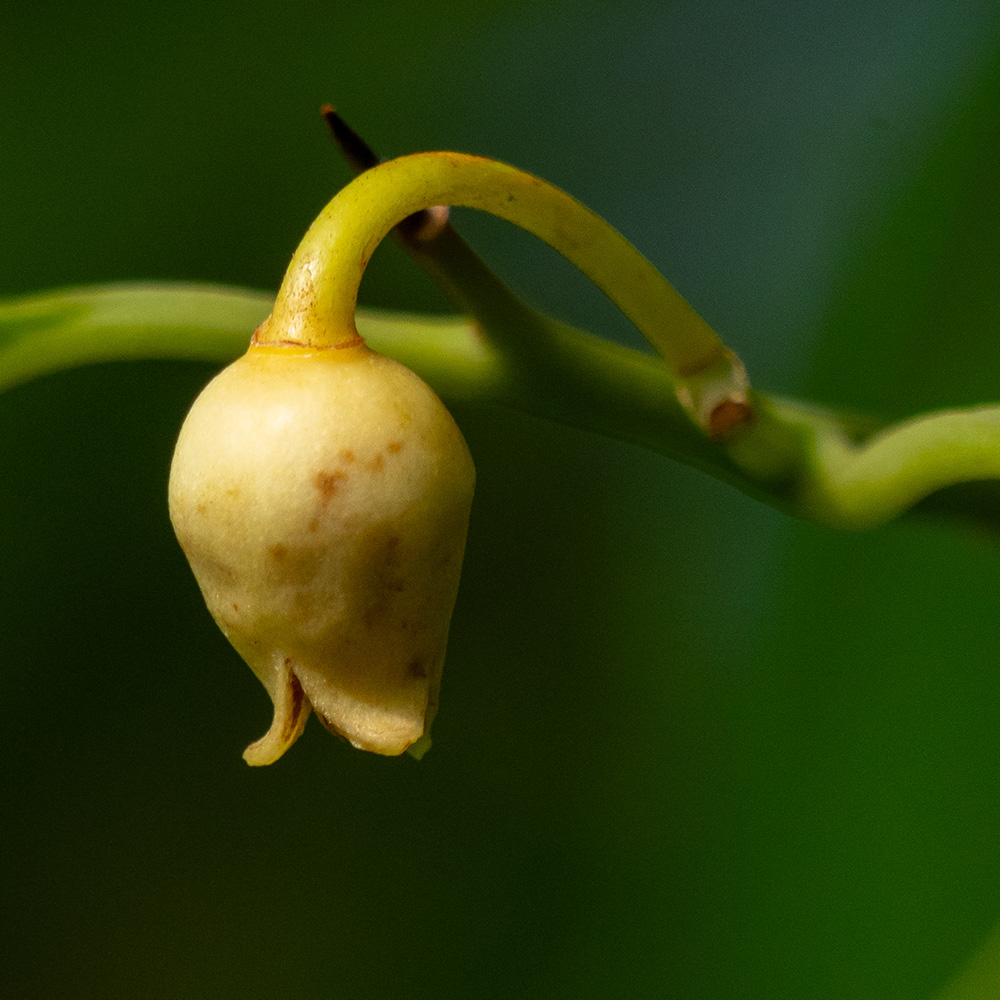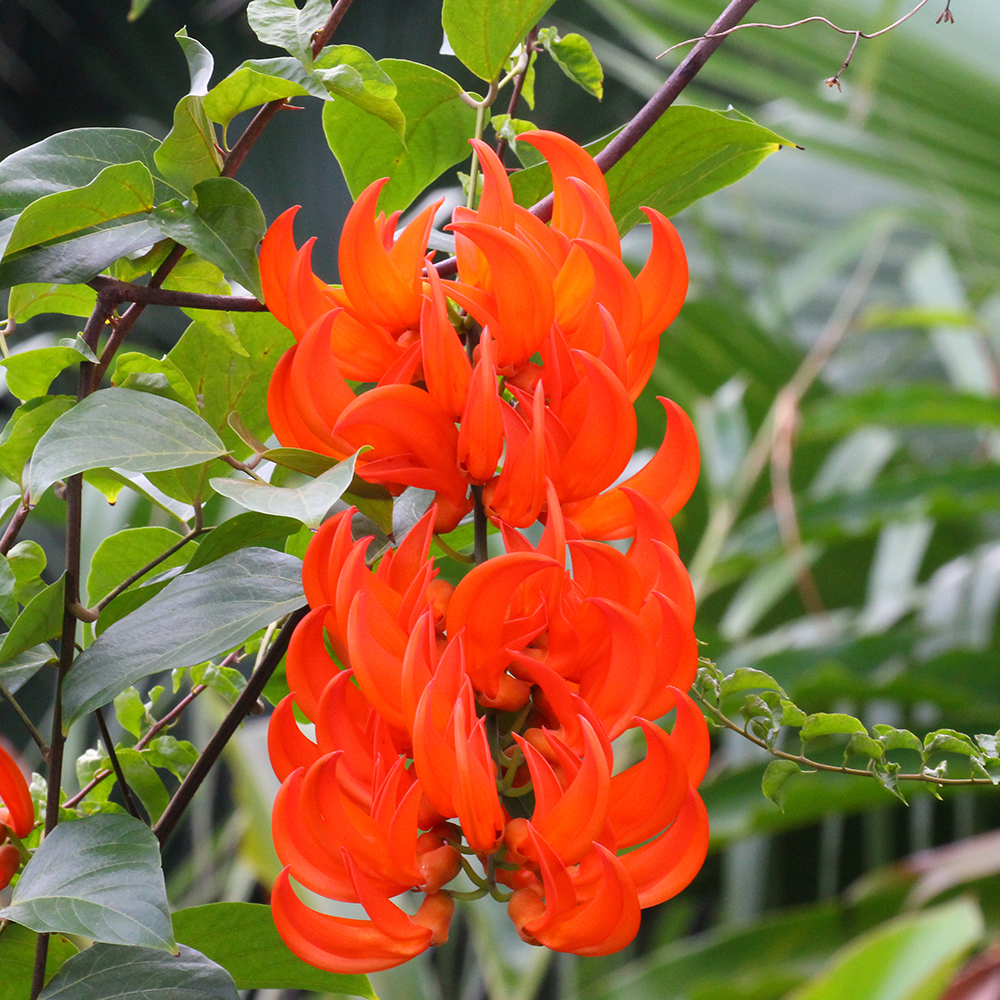Ghost's Foot (Trevesia burckii)
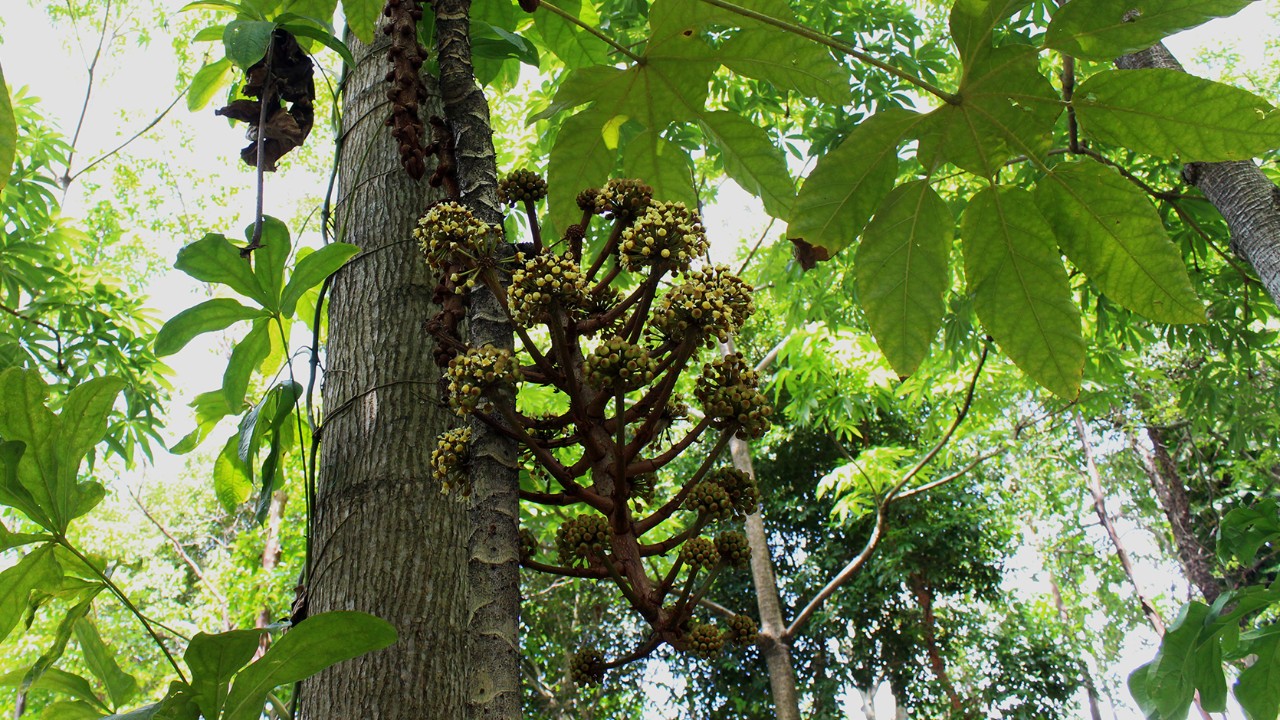 The downward-growing inflorescence is borne directly on the spiny trunk, with more developing inflorescences emerging near the leaf crown.
The downward-growing inflorescence is borne directly on the spiny trunk, with more developing inflorescences emerging near the leaf crown.
The ghost’s foot (Trevesia burckii) can be found throughout the tropical rainforests of Southeast Asia, ranging from Thailand and Peninsular Malaysia as well as Sumatra, Borneo and Singapore, where it is critically endangered in the wild. This slow-growing, understorey tree can grow up to 10m in height and is a member of the Araliaceae family, which includes familiar plants such as the common ivy (Hedera helix), the dwarf umbrella tree (Schefflera arboricola), the Ming aralia (Polyscias fruticosa), and the medicinal ginseng species (Panax spp.).
The unique “hand-shaped” or palmately-lobed leaves of this tree have inspired a number of common names for this plant. Malayan natives gave descriptive monikers such as tapak badak (rhinoceros’ foot), tapak itik (duck’s foot) and tapak rimau (tiger’s foot) due to the resemblance of the leaves to the animal’s footprints. The plant has also been called the ‘snowflake tree’ although this name is more associated with T. palmata, a related species with a more detailed leaf shape and a silvery new growth — new leaves in T. burckii are copper in colour.
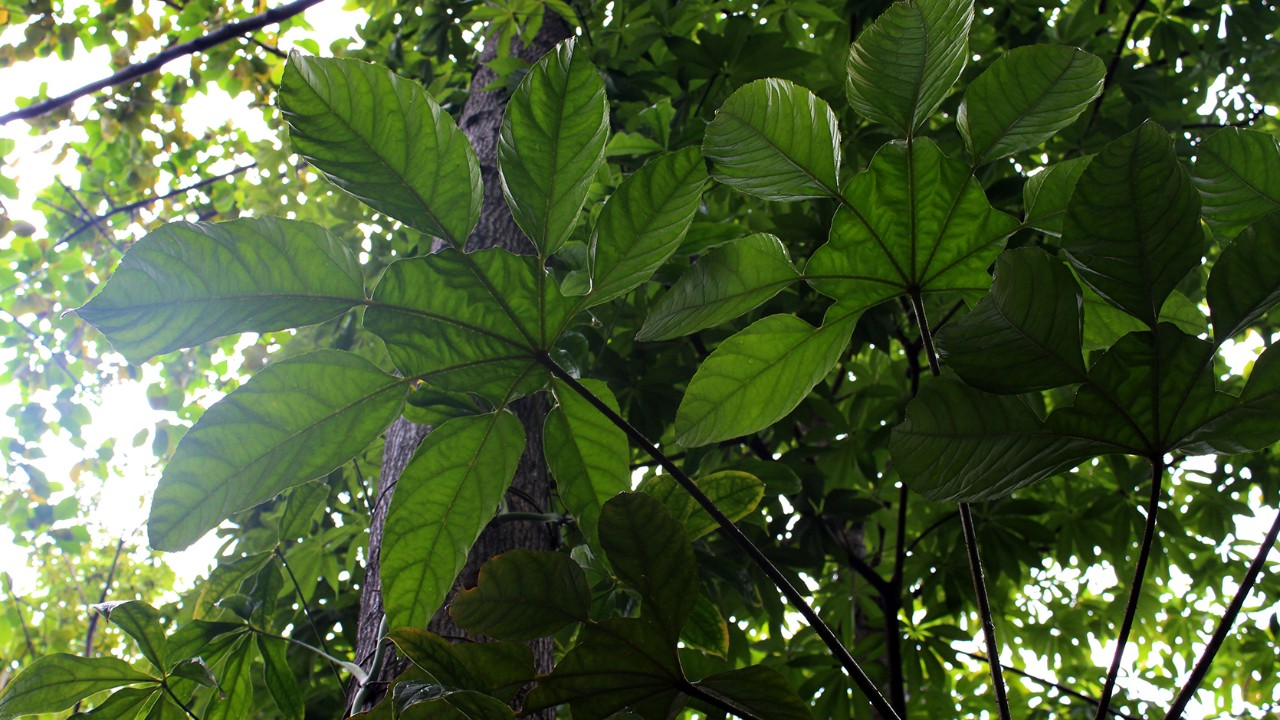 Resembling a webbed foot, the complex leaf shape is formed when the leaf blade constricts towards the midrib at the base of each “finger” and webbed at the leaf base.
Resembling a webbed foot, the complex leaf shape is formed when the leaf blade constricts towards the midrib at the base of each “finger” and webbed at the leaf base.
The inflorescences can reach a length of 60 cm, where the main stem branches off laterally into several umbrella-shaped clusters of flowers. The flower buds “bloom” when their cap-like, fused petals - called a calyptra - are shed as a whole, revealing a ring of white stamens around the swollen, yellow pistil in the centre. A single inflorescence may take several months to mature from the time it begins to develop to the time the first flowers open. Not much is known about the pollinators and seed dispersers of this species but the fruits may probably be eaten by small birds or bats.
Come visit the bizarre ghost’s foot trees at the Secret Life of Trees garden in World of Plants. With more inflorescences developing, you can expect to see more of its peculiar flowers over the next few months!
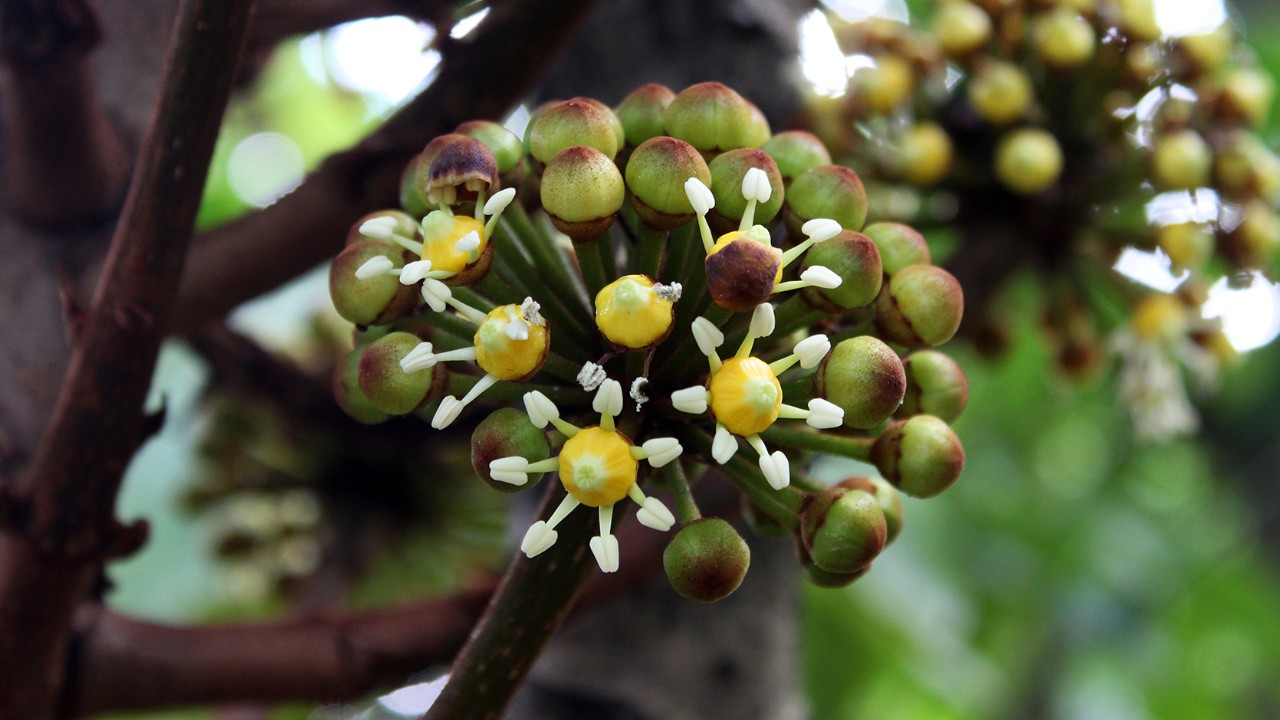 Close-up of the umbellate flower cluster and the individual flowers.
Close-up of the umbellate flower cluster and the individual flowers.
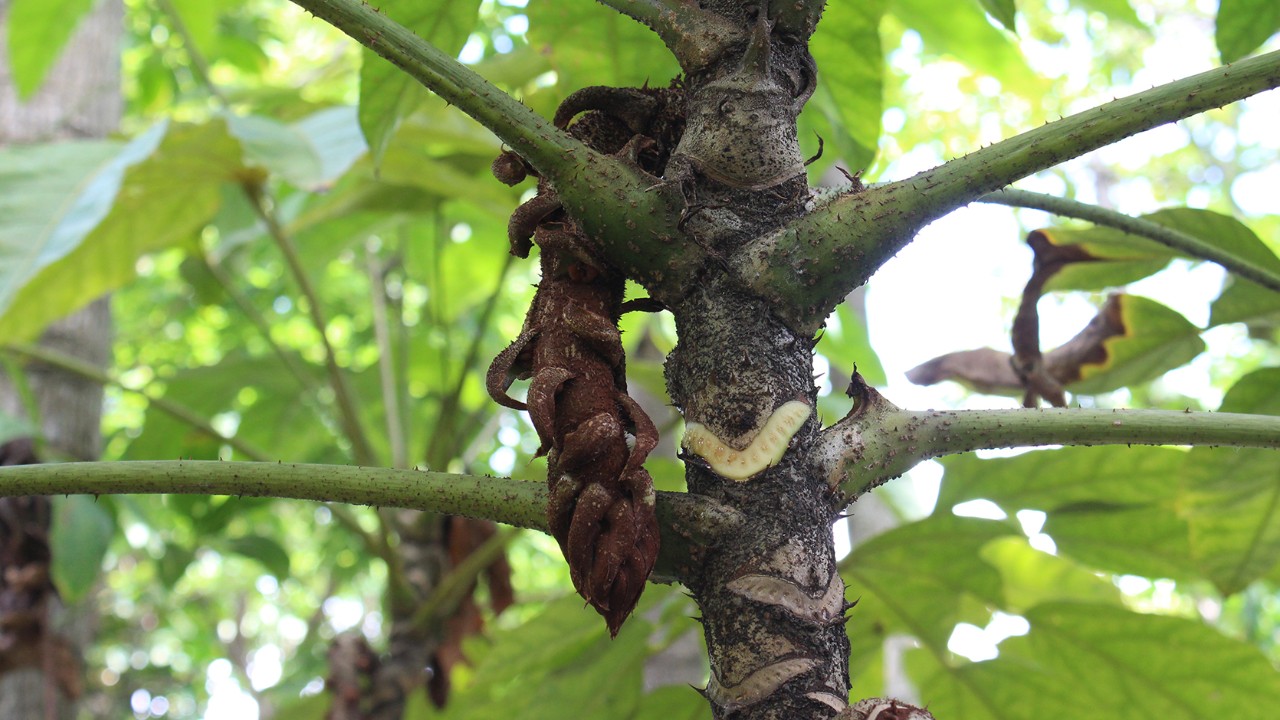 Close-up of a very young, developing inflorescence. Literally a late-bloomer, it will be several weeks before the first flowers on this stalk start to open!
Close-up of a very young, developing inflorescence. Literally a late-bloomer, it will be several weeks before the first flowers on this stalk start to open!
Written by: Hazri Boey, Senior Horticulturist (Gardens Operations)
Hazri not only surrounds himself with plants at work; he has an abundant collection at home too! Having nurtured a keen interest in nature since young, he might have gone on to become a zookeeper caring for owls or sloths had it not been for his plant identification talent!
